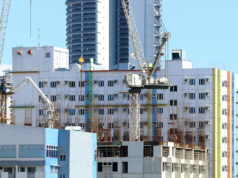FSCC releases systemic risk crisis management framework

THE BANGKO SENTRAL ng Pilipinas (BSP)-led Financial Stability Coordination Council (FSCC) introduced a framework to identify and manage risks in the financial system through a structured monitoring and evaluation process.
The Systemic Risk Crisis Management (SRCM) framework launched on Monday is meant to allow the FSCC to evaluate where vulnerabilities lie in the financial system and what interventions should be done to prevent systemic risks, or problems faced by any entity that could affect the rest of the economy, from progressing into crises.
“The SRCM is a strategic document that highlights how are ongoing tasks contribute to crisis management and identifying initiatives which we believe are needed moving forward. As we develop the tactical plans that underpin this strategic document, the SRCM is thus a living document that evolves with the market and the needs of its stakeholders,” BSP Governor Benjamin E. Diokno said during Monday’s launch.
BSP Senior Assistant Governor and FSCC Technical Secretariat Head Johnny Noe E. Ravalo said at the launch that the framework is a “decision tree” to help authorities decide whether an event is a material or systemic risk while preparing to avoid the occurrence of such risks.
“A lot of this is premised on preemptiveness. And that’s why we actually do…the macroprudential stress tests, the simulations, before a crisis happens so we understand what the spillovers would look like, who will get affected if a particular firm or industry or an economic shock that’s happened throughout the system,” Mr. Ravalo said.
“There will always be some vulnerability that will drive markets… The point of the SRCM is not to forecast. But the point of the SRCM is to be prepared for the next crisis,” he added.
The SRCM document said a disruption’s impact on the economy is the “ultimate barometer” for qualifying it as systemic.
“Taken from a different standpoint, it is not the magnitude of the initial shock, but rather how the shock can potentially amplify to affect different elements of the broader economy… Taking this further, the FSCC argues that a “crisis” has arisen or about to arise if the disruptions caused by the systemic risks are expected to have significant socio-economic effects, in whole or in parts of society,” it said.
The framework outlines the procedures to be followed by FSCC member agencies in managing systemic risks.
At present, the FSCC said it is able to map out the network linkages between conglomerates and the banks using actual data on credit exposures. This network reflects the channels through which risks can be transmitted.
Under the SRCM framework, if there is a potential systemic risk that is macro-financial and seen negatively affecting the macroeconomy, the FSCC should take direct jurisdiction and make “concrete and timely” interventions to stem further deterioration of the situation.
“It should be stated clearly and categorically that the objective is not to prevent the closure of a financial institution, particularly a bank… The task of this SRCM is to instill a framework for the oversight of the entire financial system, cognizant of the interlinkages between stakeholders, and having in place an organized mechanism for handling systemic crises.”
The framework also said the FSCC should have a communication campaign for systemic risks to periodically update the public about these kinds of situations without being alarming, as well as a crisis management team.
A surveillance mechanism is also suggested to help the FSCC understand market behaviors and the interconnectedness among firms and industries to help it identify triggers to predict where a systemic risk could stem from and who would get affected if any entity were to have problems.
The framework also stressed the need to have financial safety nets, including deposit insurance, prudential regulation and resolution mechanisms, to increase market resilience.
Under the SRCM framework, regulators must require financial market infrastructures to have business continuity plans to show critical dependencies in their functions and across other entities in the market.
Macroprudential stress tests and crisis simulation exercises also need to be conducted to detect vulnerabilities in the system. According to the framework, the FSCC has designed a macroprudential stress test that “specifically incorporates a network among firms so that the link between private entities and the financial market can be simulated” that should be undertaken soon.
“Systemic risk analysis is preemptive and as such, the authorities take preemptive measures in assessing the state of stability. Since complex systems are defined by the changing risk behaviors among interconnected participants, the analysis needs to preserve the linkages while testing for how risks are transmitted and magnified,” it said.
The SRCM framework also discusses specific risks that are being monitored by the FSCC, such as cyber events amid growing digital transactions and climate-related stability risks.
If systemic risks escalate into a crisis, the FSCC must declare it as such and ensure this is managed and communicated to stakeholders immediately. Actions to address a crisis include policy interventions and the assessment of their effectiveness in containing the crisis.
Once the immediate shocks of the crisis are addressed, the FSCC will need to craft an exit strategy from crisis management protocols to see if the interventions address structural vulnerabilities — meaning they must be retained post-crisis — or only temporary imbalances, which means they should be unwound.
A post-crisis report will also need to be prepared and must include recommendations to avoid the future occurrence of the crisis, such as possible adjustments to market protocols, regulation or legislation.
The FSCC is an interagency council composed of the officials of the BSP, the Department of Finance, the Securities and Exchange Commission, the Insurance Commission, and the Philippine Deposit Insurance Corp.
The council’s Executive Committee is chaired by the BSP chief and is composed of the top officials of member agencies. The National Treasurer may also be invited to the meetings of the committee as a special non-voting member. — K.B. Ta-asan



